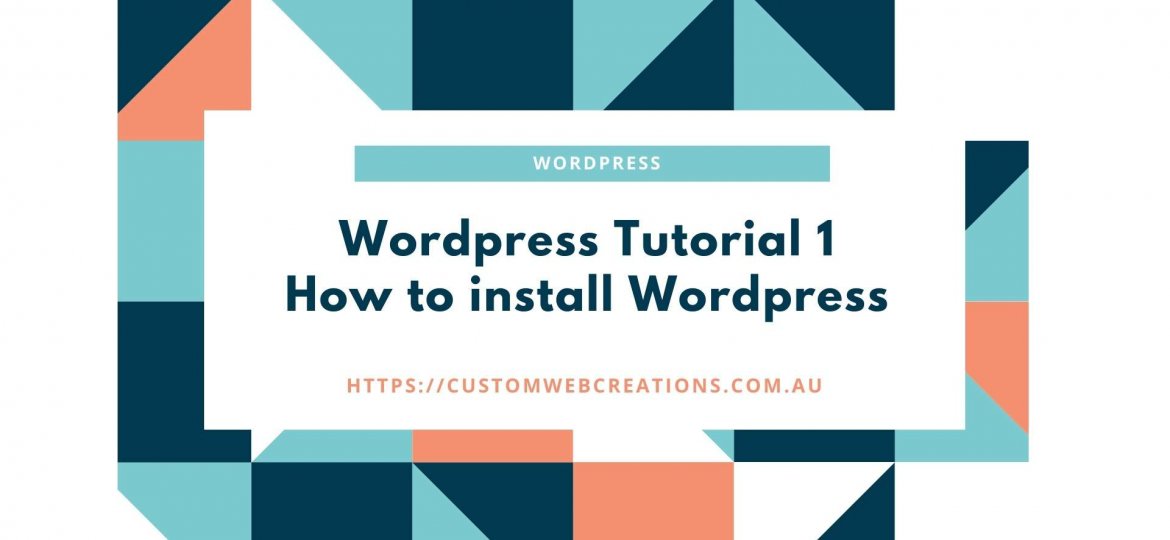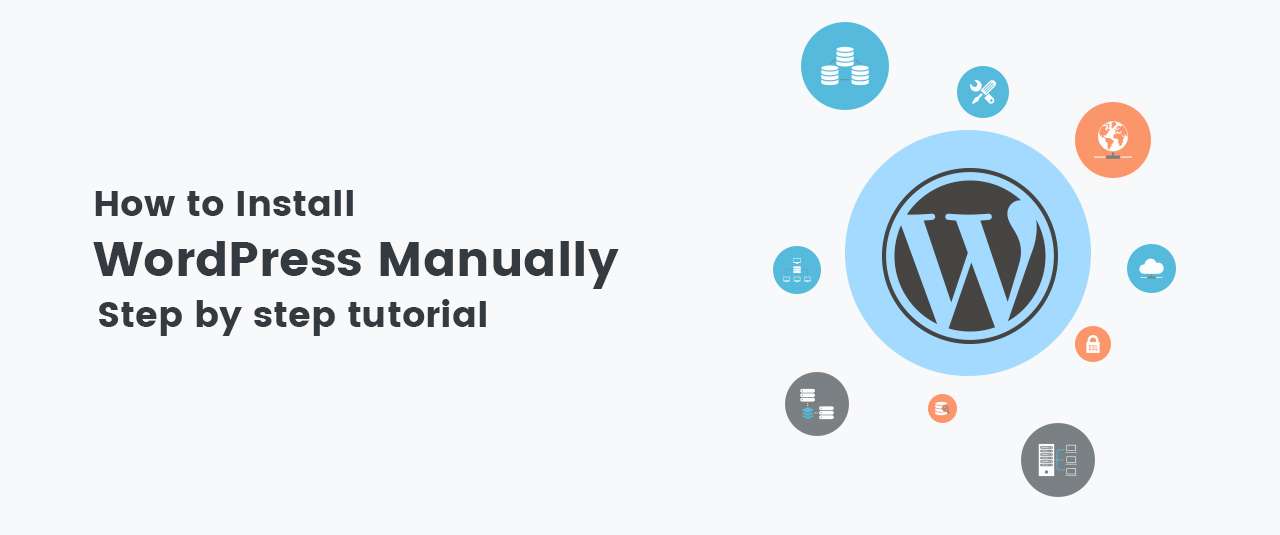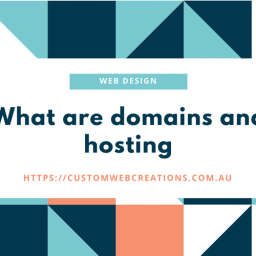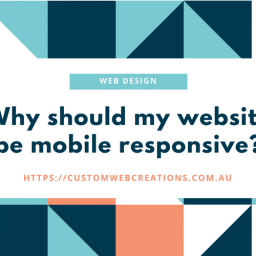
In this WordPress tutorial for beginners, we are going to discuss how to set up a WordPress website on Cpanel hosting. When setting up WordPress on your own hosting environment, you have more control over the website, not to mention having more control over plugins and extensions as well.
This is an Australian based WordPress tutorial, you can use this tutorial for other countries, but you will have to replace a few links, such as hosting and WordPress download links with your version for your country.
WordPress is a powerful web builder and is a widely used content management system used on over 30% of all websites, online stores, and blogs across the internet. It’s versatile, SEO friendly, functional, and can save a lot of money if you host a WordPress website on your own hosting, not on WordPress.com.
Self-hosted WordPress installations allow you to add plugins for free, adding value for money and no restrictions on what you can do to the website as well.
By following this WordPress tutorial, you can set up a self-hosted WordPress website, online store or blog in no time. WordPress web designers from all around the world use the method I am about to teach, and I have used this WordPress installation method time and time again to build websites for my clients and customers.
Step 1 – Set up a domain name
Go to GoDaddy.com and enter a domain that you would like. The domain name you want may not be available as a domain name has to be unique, try a different combination of what you are after.
Also, choose a .com or .com.au domain depending on your location. You can read my article about choosing a domain name here.
After you have chosen a domain name and it is available, keep clicking without choosing any extras or other domains until you get to the cart or checkout, create an account and purchase the domain for your required length of time.
If you choose a .com.au domain extension, you will be required to enter an ABN or an ACN number as well as company information.
This is because you are buying an Australian domain name and it is required by law to prove that your business is in Australia. Fill out all the details and purchase.
If you don’t own a company or don’t have an ABN, just choose a .com domain instead.
Once you have purchased the domain, log into your account with the username and password you used to register, if you are not already logged in and click on “My Products” at the top of the page and keep the browser tab opened, you will need to come back to the domain you have just purchased in the next step.
Step 2 – Set up hosting
Setting up a domain name and hosting is needed in order for the website to function properly. Hosting is where all the website files will be located, much like on your computer, but they are hosted online instead.
Go to Zuver.net.au in a new browser tab and click on “Cpanel hosting” in the main menu up top. I use Zuver for my own website and many of the websites I design for clients and as far as I’m concerned they are the best Australian web hosting I have come across in all my years of web designing in WordPress.
They also offer free auto-install SSL certificates with their hosting.
Once the page loads, set up your plan, choose the storage space, CPU and memory you would like. 5 Gb storage, 200% for CPU and 2Gb memory are more than enough for a standard WordPress website, but if you are going for a more elaborate website or online store, choose higher specs.
You can upgrade inside your account once you have purchased the hosting if your website grows at a later stage.
Click here to see a screenshot of Zuver Hostings cPanel settings.
You can choose phone support, but even without it they have a fast ticket system anyway, choose Acronis backups if you would like the website to be automatically backed up, I would recommend using this feature as you can restore backups if anything goes wrong.
Add in the domain name you just purchased in the previous step and follow the sections and purchase. You should receive an email with information regarding the hosting, take note of the nameservers. These are needed to connect the domain to the hosting.
Once you have purchased the hosting log in if you are not already logged in and click on “Manage Web Hosting”. Click on the orange “CPanel” button, this will take you to the Cpanel section. Leave this browser tab open as well.
Step 3 – Connect your domain to the hosting
Open up the domain you just purchased from Godaddy in the browser tab. There should be a list of all your domains if you only have one it will be listed here, and the domain you just purchased should be here as well.
Click on “DNS” on the right-hand side. Scroll down to the nameserver section and click on “Use Custom Name servers”.
Follow these instructions for setting up nameservers on Godaddy.
Delete the default nameservers and enter the Zuver nameservers you received in the email you received from Zuver. They should be “ns1.syd3.zuver.hosting” and “ns2.syd3.zuver.hosting” and click on save.
But they may be different. If you didn’t receive the nameservers, contact Zuver through their ticket system or phone them.
After you have completed this step, it will take a few hours for the domain to “propagate” or link to the hosting. Give it at least 10 hours for the domain to link properly.
Bookmark this page by clicking on CTRL + D or by adding this blog to your bookmarks and come back when the domain has propagated.
You can check to see if it has propagated by going to your domain in your browser and if it has an index with a few files on the screen or it has a “403 Forbidden error” then it has propagated or connected, if it hasn’t then it might have the “Error screen saying a connection with the servers cannot be established”.
You can check propagation at https://dnschecker.org/.
You can read more about domain propagation here.
Step 4 – Installing WordPress on your hosting
Login in to your Zuver hosting account by going to this link: https://my.zuver.net.au. Once you have logged in click on “Manage Web Hosting” and then click on the orange “cPanel” button on the right.
Your cPanel will appear. Click on “File Manager” at the top left. Scroll down to where it says “public_html” in the file explorer right-hand side, then double click on it.
It will open the folder and there will be a few default files in there, you can delete these by right-clicking on them and choosing “delete”. The public_html folder is your public folder where all website files should go that have anything to do with the website.
Next open up a new tab, keeping the hosting tab open, as we will come back to this tab soon. Go to https://en-au.wordpress.org/. This is where we will download the WordPress files for the website installation.
Next, click the blue “Download” button at the top. This will download the latest version of WordPress to your computer. Download it to a location such as “Desktop” on windows or where you can access the zip file.
Once the zip file has downloaded, head back to your hosting tab in your browser. Click the “upload” button at the top and choose the WordPress zip file we just downloaded.
Once the file has uploaded go back to the hosting tab, inside the public_html folder and refresh the tab or page. You should see a file called WordPress.
Right-click on the file and click on “extract”. Once it has extracted, refresh the page again and double click on the extracted folder called WordPress. Select all files by clicking on the top file and holding down the Shift button on your keyboard and then choose the last file.
Right-click on any of the selected files and choose “Move”, in the pop-up box, delete the “WordPress” text from the path section only, leaving only the “/public_html/”.
Then click on the “Move Files” button. Click the “Up One Level” button at the top and you should be back in the public_html directory again, with the WordPress files extracted.
Next, open up your domain in a browser tab with https://yourdomainname.com.au. replacing yourdomainname with your own. Make sure you have the https:// before the domain name.
You should get a WordPress installation screen similar to the one below. Before we install WordPress, we will set up the database as this will be required for the WordPress installation to run properly. The database contains all the WordPress installations data that it needs to run properly.
Leave the WordPress installation screen open for now and open up the cPanel tab we left opened previously.
See the screenshot of the WordPress Installation screen.
Step 5 – Setting up the WordPress database
Now in the file manager screen that we have opened, click on the “cPanel” logo top left of the screen, this will take us back to the cPanel settings page. Scroll down to where it says Databases and click on “MySQL Databases”.
This will open up the database creation screen. Type in a name for the new database where it says “create new database”, then click on “Create database”. Once the database is created, click on the “go back” button and scroll down to where it says “Add new user”.
Type in your username, and a custom password. make sure it is a strong password with a combination of uppercase, lowercase, special characters and numbers, and at least 8 characters long.
Or you can choose the password generator and it will generate a password for you. Add this database password in a secure location where you can access it if you forget it.
Click “create user”. After the user has been created go back to the database screen again and scroll down to where it says “add user to database”. There are two dropdowns, select the username you just created and the database you just created.
Click on “Add”. Next, a screen will open, select the checkbox up top that says “All privileges” then click on “Make Changes”.
We have just created a database and a user that controls the database, by creating these two items, we can successfully connect the database to the WordPress installation.
On the database screen that shows all your databases, you should have your database listed as well as the username you created that is attached to the database.
See the screenshot of the database list in cPanel.
Take note of the database name, the username and the password you used to create the database user. We will need these in the WordPress install screen.
Step 6 – WordPress Installation
Open up the WordPress installation tab that we left opened and you will come to the first installation screen. It will have a list of languages that you can select for the WordPress installation. Choose “English(Australia)” or your native language and click continue.
The next screen will have information regarding the database and other relevant information, click on the “Let’s go” button at the bottom.
The next screen is the database set up, where we connect the database we previously created with the username and password. Add in the database name, username, and password. Make sure you enter all these in correctly, without spaces on either end for all three, otherwise, the installation will fail on the next screen.
Leave the “database host” and the “prefix” as they are. Click on “Submit”.
If everything goes well you should see an installation successful screen with a “Run Installation” button. Click it.
Add a site title, username, password, email and leave “Discourage search engines from indexing this site” unchecked for now. Take note of your username and password as you will need these to log in to the WordPress dashboard.
Click here to see the installation screen.
Click on “Install WordPress”.
You should see a “Success” screen with a login button below, click on the login button and enter your username and password you used to create the WordPress installation.
Once you login in you will see the WordPress dashboard!
Screenshot of the WordPress dashboard.
Congratulations you have successfully installed WordPress. You’re a star!!
This is the first step to creating a fantastic website with all of the WordPress features.
In my next article, I’ll introduce you to the features of WordPress, including themes installation and how to install plugins as well as basic WordPress settings. Stay tuned!!!
Further Reading
Timothy Allsworth is an experienced specialist web designer, content marketer, and search engine optimization ( SEO, SEM ) expert here at Custom Web Creations Web Design Brisbane. He has over 7 years of real-world experience in the field and loves helping people and their businesses to succeed in an online world through his tried and proven techniques. He has numerous university-level qualifications in Australia. Advanced web programming, database engineering, SEO and SEM specialisations, Google marketing, business marketing are some of his qualifications. He envisions a web design business that prefers quality over quantity and gives the client the best end digital product their money can buy at affordable prices.















